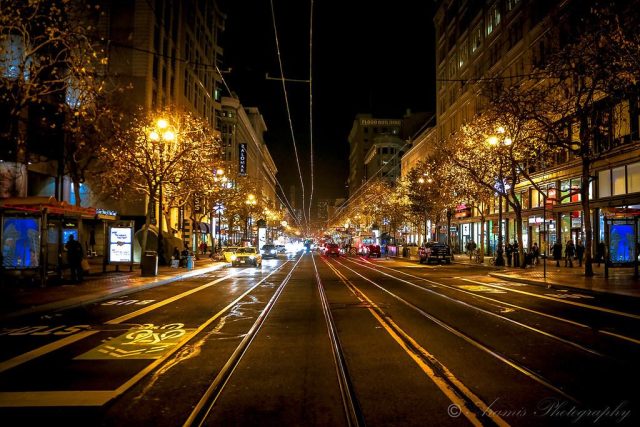In the vibrant tapestry of South American culture, street markets have long held a place of prominence, serving as bustling epicenters of community life, commerce, and tradition. These vibrant marketplaces, with their kaleidoscope of colors, tantalizing aromas, and cacophony of sounds, offer a sensory journey into the heart of local culture. Yet, beneath the lively banter of vendors and the vibrant displays of handcrafted goods, a transformation is quietly unfolding. As globalization and modernization sweep across the continent, the question arises: are these cherished street markets losing their authentic charm to commercialization? This article delves into the evolving landscape of South American street markets, exploring the delicate balance between preserving cultural heritage and embracing economic opportunity.
Street Markets: Balancing Tradition and Modern Commercial Influences
In the vibrant tapestry of South American street markets, a delicate dance unfolds between the echoes of age-old traditions and the relentless march of modern commercial influences. Vendors, with their roots deeply entrenched in local culture, strive to preserve the essence of their heritage. However, the surge of global trends and increasing tourist influx has led to a noticeable shift. Traditional stalls showcasing handmade crafts and indigenous produce now stand shoulder to shoulder with booths selling mass-produced goods. This evolving landscape raises intriguing questions about the sustainability of cultural authenticity in these bustling hubs.
- Authentic Craftsmanship: Markets remain a haven for local artisans, offering unique handcrafted items that reflect the region’s rich history.
- Commercial Pressures: The growing demand for souvenirs and modern conveniences is reshaping the market offerings.
- Tourism Influence: As tourist numbers rise, the pressure to cater to international tastes becomes more pronounced.
The challenge lies in striking a harmonious balance where tradition is not overshadowed by the lure of commercialization. As these markets evolve, they continue to serve as a living testament to the region’s dynamic cultural mosaic, weaving together the old and the new in a colorful, ever-changing narrative.

Cultural Heritage at Risk: The Impact of Commercialization on Local Vendors
Street markets across South America have long been a vibrant tapestry of local culture, where artisans and vendors showcase their craft, and communities gather to exchange not just goods, but stories and traditions. However, as commercialization seeps into these traditional spaces, there is a growing concern about the impact on local vendors who find themselves caught in a delicate balance between maintaining authenticity and adapting to the changing demands of global tourism. Artisanal goods, once handcrafted with deep cultural significance, are often replaced by mass-produced items that promise higher profits but lack the personal touch that made these markets special.
The infiltration of large businesses and corporate interests into these markets can overshadow the local vendors, pushing them to the fringes both physically and economically. Vendors face challenges such as increased rental costs, pressure to cater to tourist tastes, and the dilution of cultural heritage. The unique essence of street markets is at risk, as the very charm that draws visitors begins to fade amidst rows of uniform stalls. The question remains: can these vibrant marketplaces find a sustainable path that honors tradition while embracing necessary change? As stakeholders ponder solutions, it’s crucial to remember the value of preserving cultural heritage in its most authentic form.

Adapting to Change: Strategies for Preserving Authentic Market Experiences
In the vibrant tapestry of South American street markets, the pulse of authenticity beats with a rhythm that draws locals and tourists alike. However, as commercial interests inch closer, preserving these genuine experiences requires thoughtful strategies. Engaging local communities becomes paramount, ensuring that the market remains a reflection of the area’s unique culture and traditions. Encouraging the participation of local artisans and vendors not only supports the community but also maintains the diversity and richness of the offerings.
Additionally, integrating technology can enhance the market experience without diluting its essence. By using digital platforms, vendors can reach a broader audience while maintaining their traditional practices. Consider these approaches to balance modernization and authenticity:
- Promote storytelling about the origin and history of products.
- Facilitate workshops and demonstrations by local artisans.
- Implement community feedback systems to ensure the market evolves with local needs.
By embracing these strategies, South American street markets can continue to thrive as hubs of culture and tradition, even amidst the tides of commercialization.

Sustainable Solutions: Recommendations for Maintaining Market Integrity
To preserve the cultural essence of street markets in South America while embracing modernization, a delicate balance must be achieved. Community engagement is crucial; involving local vendors and residents in decision-making processes can ensure that their voices are heard and respected. Governments and market organizers can implement policies that support traditional vendors, offering incentives for those who maintain local craftsmanship and sustainable practices. Furthermore, establishing educational workshops can help vendors adapt to modern business strategies without losing their unique identity.
Integrating technology in a thoughtful manner can also enhance market operations. Providing digital payment options can attract a broader customer base, including tourists, while maintaining the authenticity of the market experience. It’s important to focus on eco-friendly initiatives such as reducing plastic use and promoting organic products, which can elevate the market’s appeal to environmentally conscious consumers. By implementing these strategies, markets can evolve in a way that supports both economic growth and cultural preservation.
Future Outlook
As the sun sets on the bustling streets of South America’s vibrant markets, the question of commercialization remains as dynamic and complex as the stalls themselves. These markets, rich with history and culture, stand at a crossroads between tradition and modernity. On one hand, commercialization offers opportunities for economic growth and global recognition, inviting a wider audience to partake in the unique flavors and crafts that define these marketplaces. On the other, it poses a challenge to the authenticity and community spirit that have been their lifeblood for generations.
As we wander through the colorful tapestry of sights and sounds, it becomes clear that the future of these street markets lies in a delicate balance. Will they evolve into commercial hubs, or will they find a way to preserve their soul amidst the winds of change? The answer, perhaps, is not fixed but fluid, much like the markets themselves—ever-changing, yet always rooted in the stories of those who call them home. Whatever path they choose, one thing remains certain: the heart of South America’s street markets will continue to beat with a rhythm uniquely their own.
































